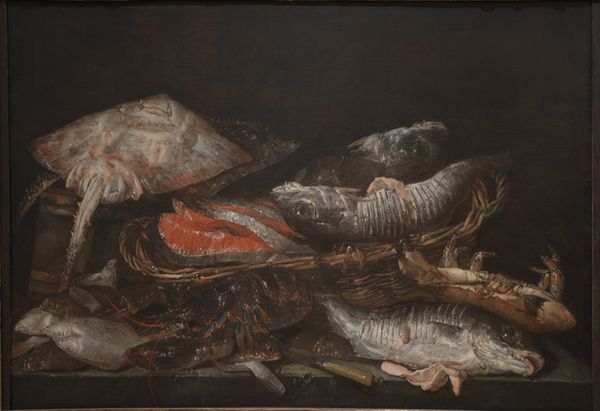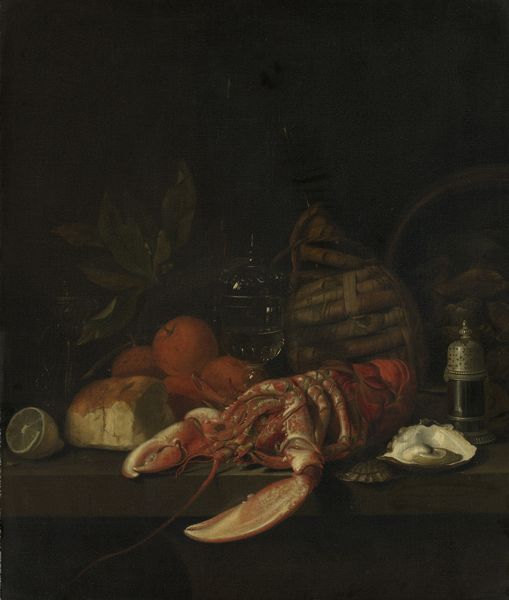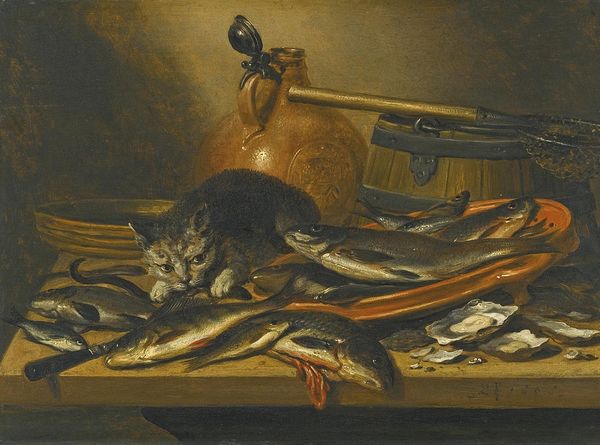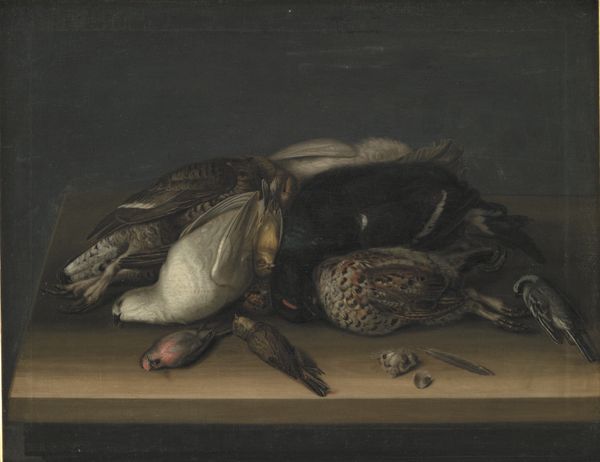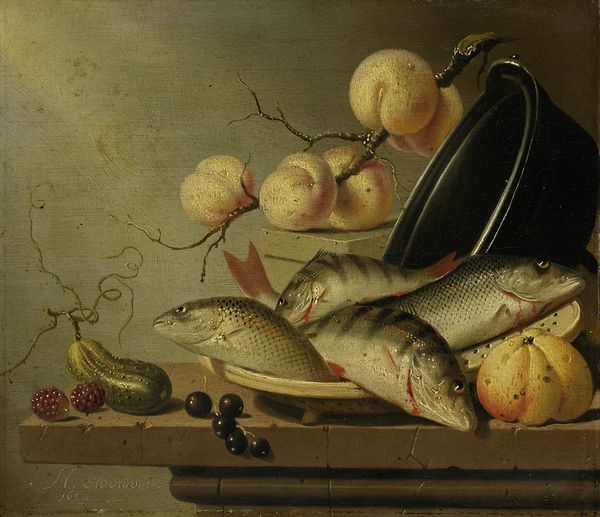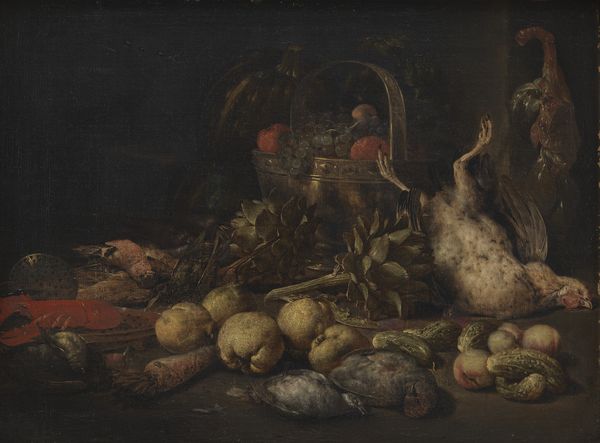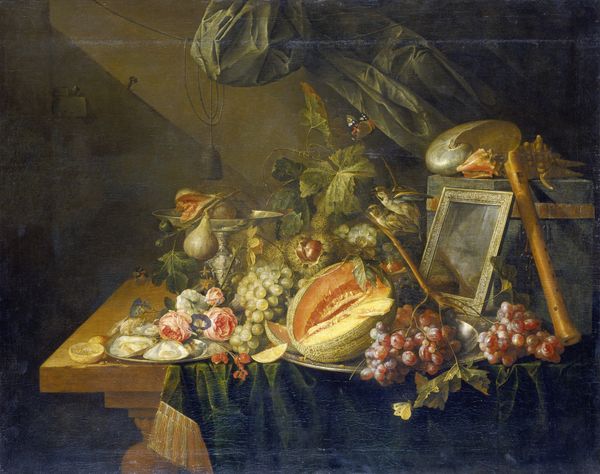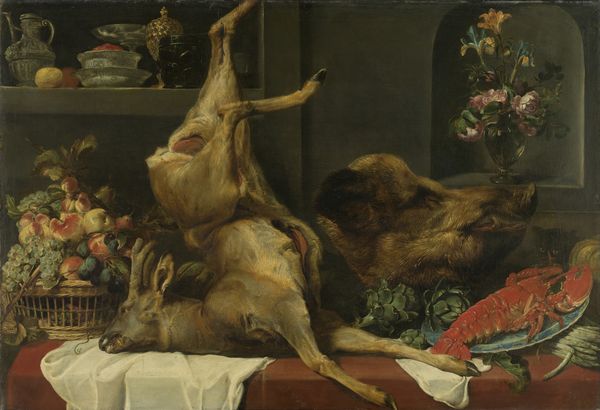
oil-paint
#
baroque
#
dutch-golden-age
#
oil-paint
#
oil painting
#
genre-painting
#
realism
Dimensions: support height 74 cm, support width 87 cm, outer size depth 8.5 cm
Copyright: Rijks Museum: Open Domain
Editor: Here we have Abraham van Beyeren's "Still Life with Fish," likely painted sometime between 1650 and 1670. The use of oil on canvas gives it a rich, almost tactile quality. There's a somberness to the composition that's both intriguing and slightly unsettling. How do you read this painting? Curator: That somberness is a great starting point. These Dutch Golden Age still lifes, while seemingly just depictions of food, are so much more. Consider the historical context: the rise of Dutch maritime power and the expansion of global trade. Fish wasn't just food; it was a commodity, a symbol of prosperity built on potentially exploitative economic systems and the subjugation of the environment. Editor: Exploitative how? I guess I hadn’t really thought of the economic side of the piece before. Curator: Well, who benefits from this bounty? The painting highlights the availability of these resources, but it also subtly acknowledges the labor and systems required to bring them to the table. Consider ideas of access, both in Van Beyeren's time, and our own, related to food and environmental justice. Editor: So, the painting becomes a statement, or at least raises questions about the ethics of consumption. Curator: Precisely. And think about the 'vanitas' tradition in still life—these images also acted as memento mori, reminders of mortality. The fish, already caught and prepared, highlights the transience of life, a meditation on our place in the natural order but also how resources may or may not last. It also poses questions such as who got access to it and who didn't, since they are not eternal. Do you see the visual language of privilege and possible over-exploitation now? Editor: Definitely! I initially saw only the surface, but understanding the historical and social implications adds a whole new layer. I now read this artwork with a completely new understanding of its implications and the history surrounding the painter and the work of art itself. Curator: Indeed. This is the power of art history. We can engage in critical dialogues and explore social injustices, economic inequalities, environmental and intersectional injustices and more. It also leads to the deeper, critical questions we must pose now.
Comments
No comments
Be the first to comment and join the conversation on the ultimate creative platform.

